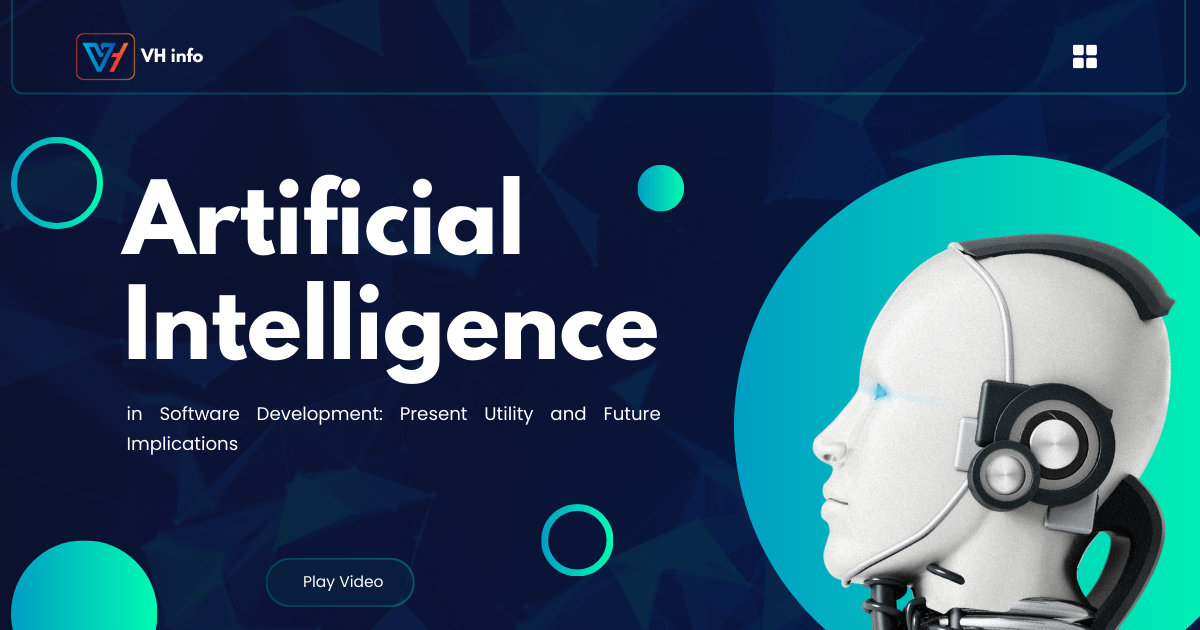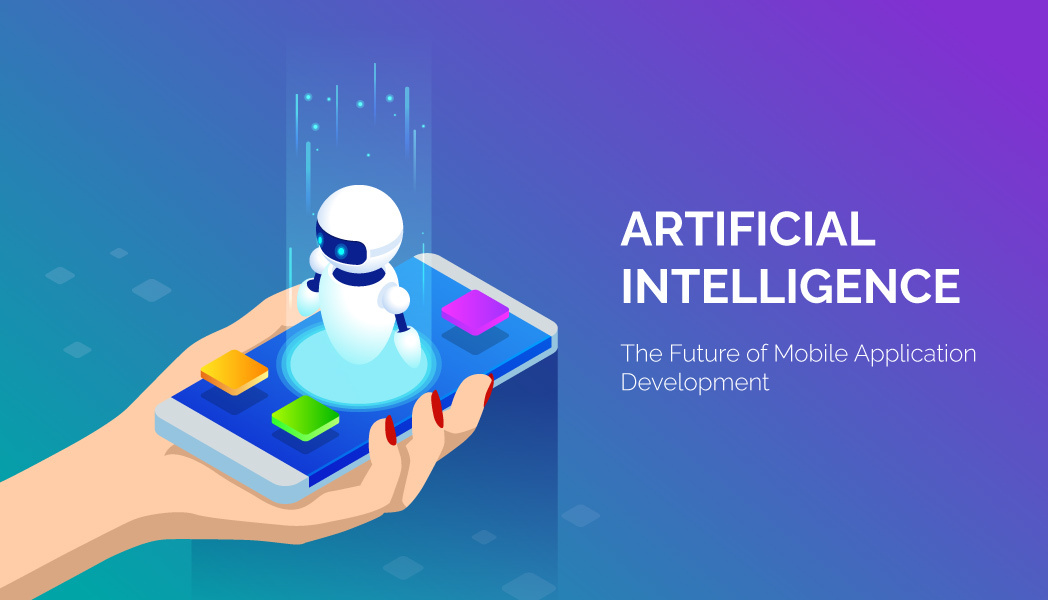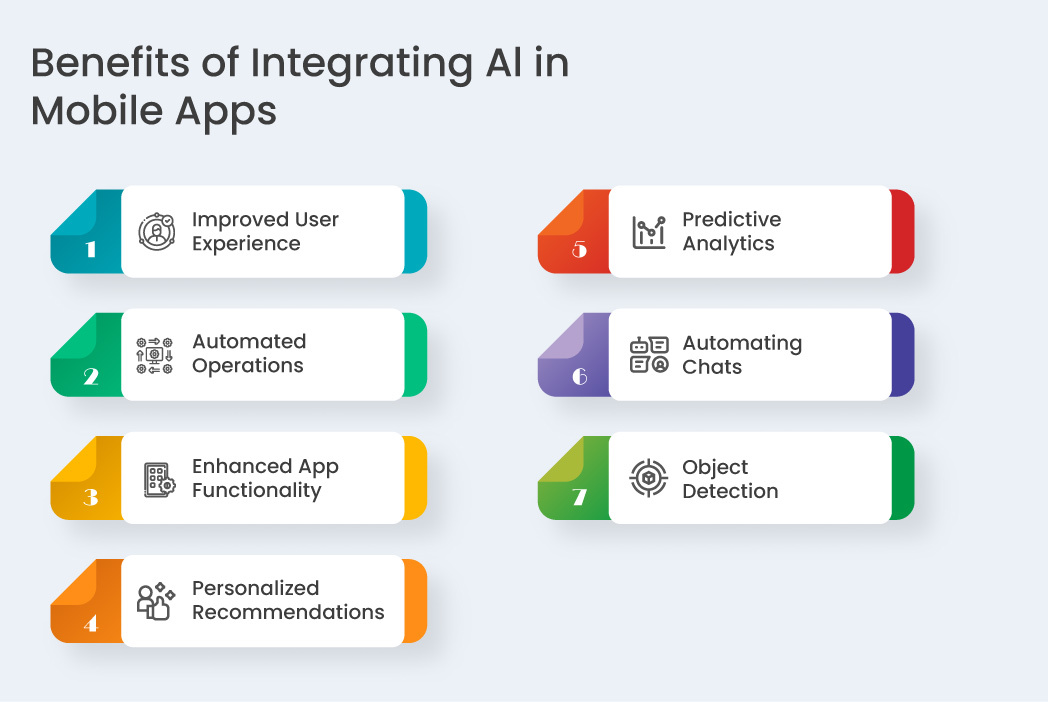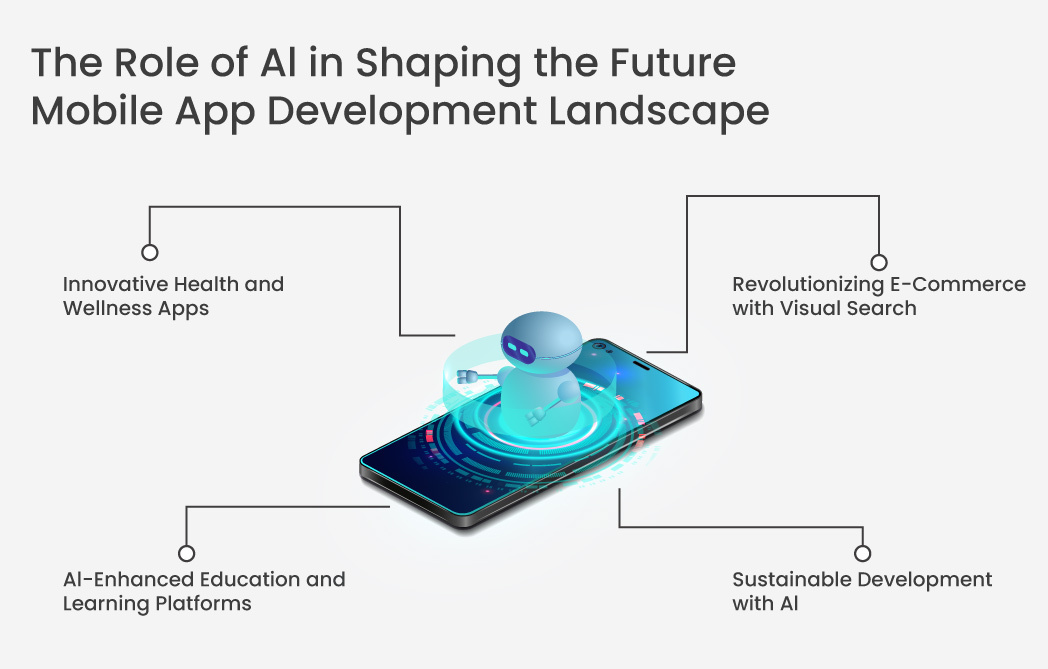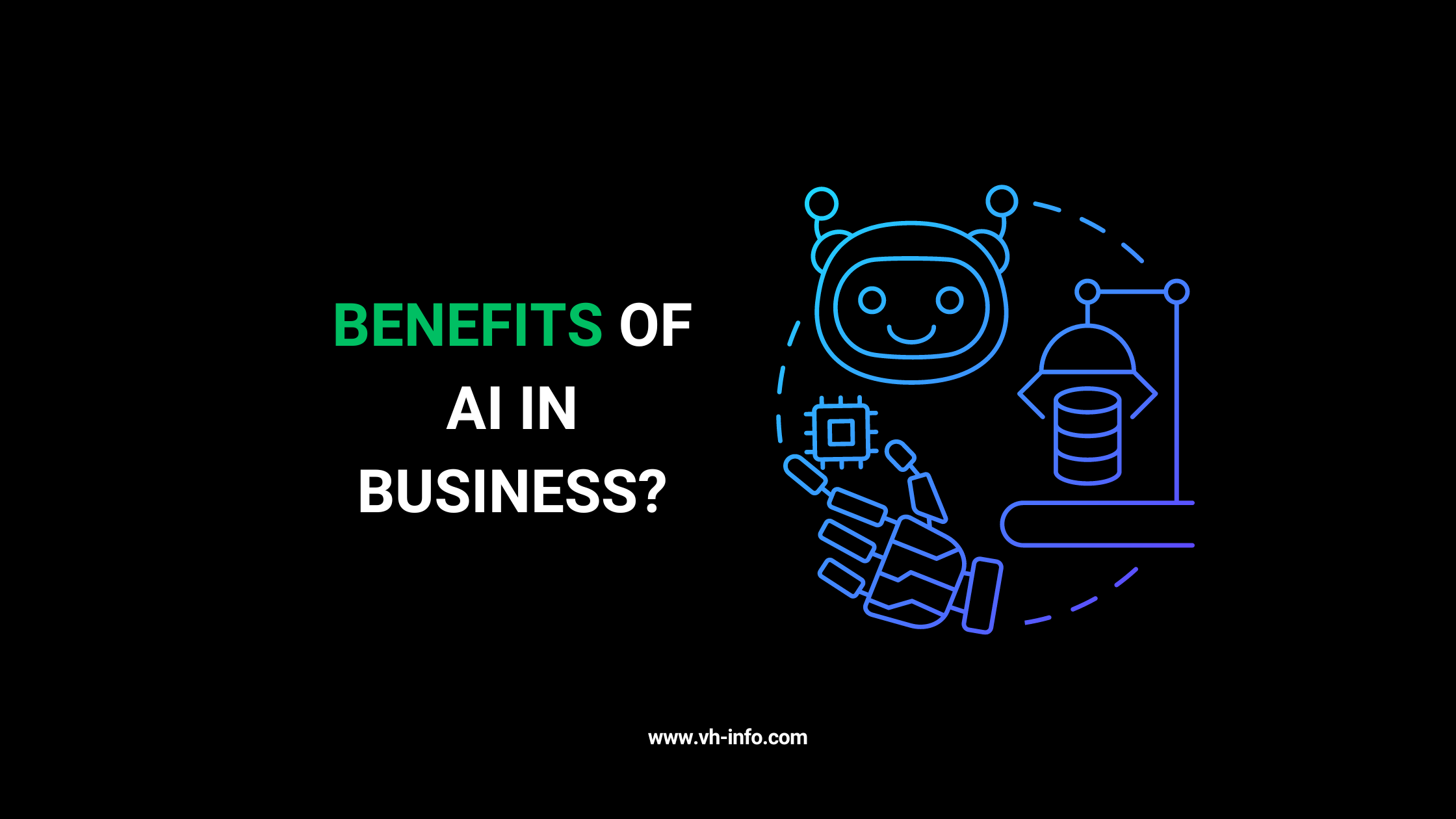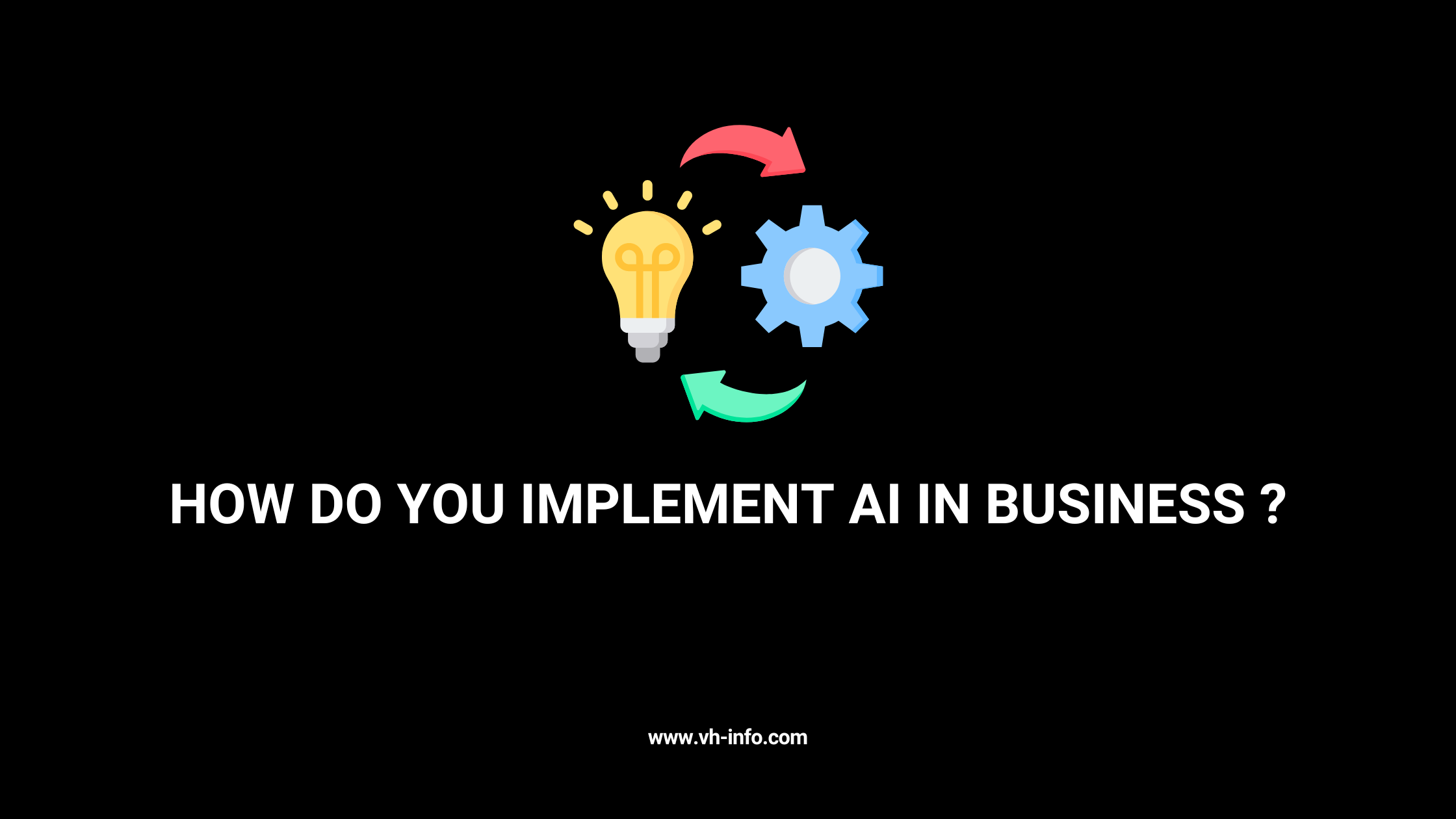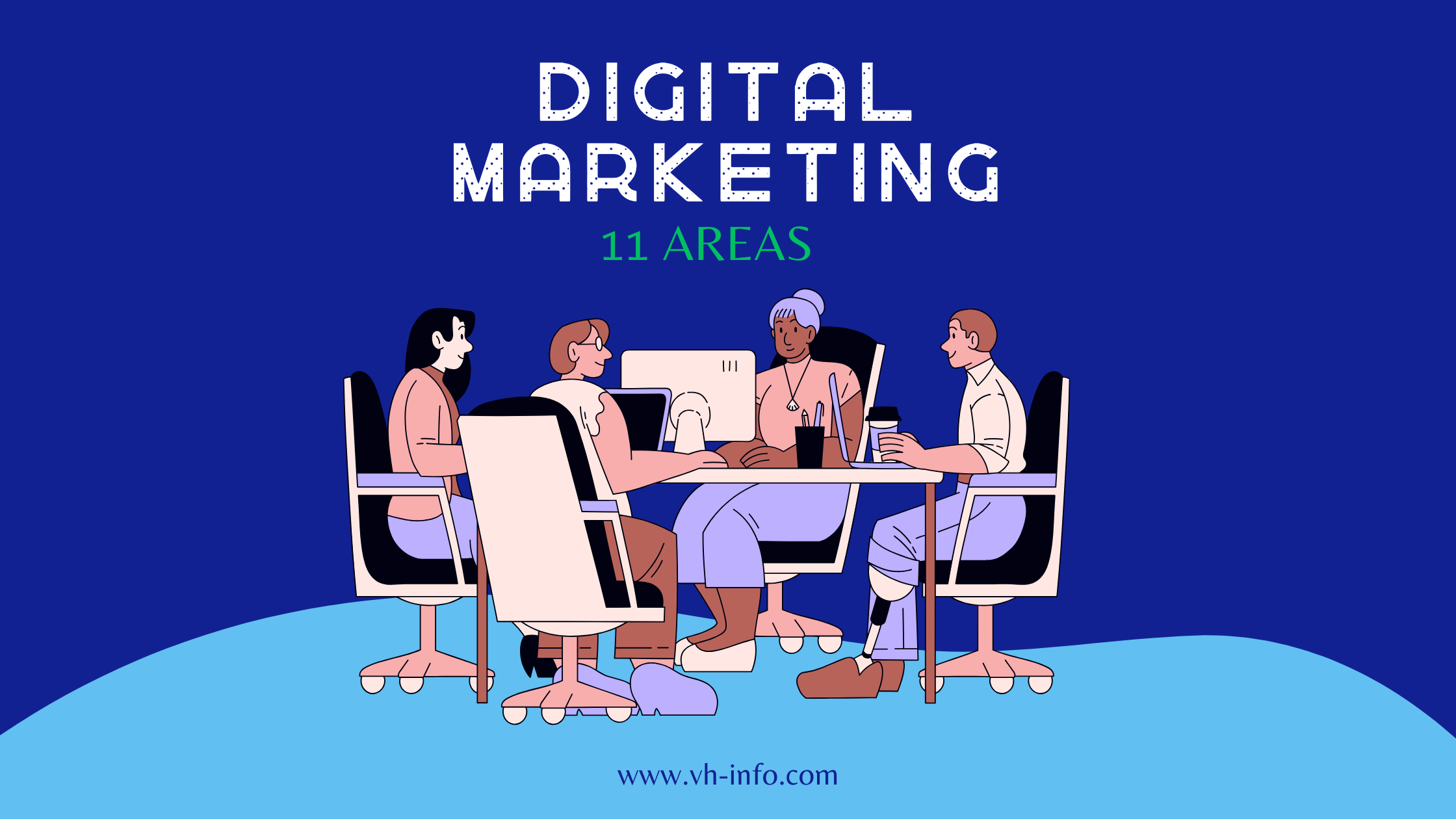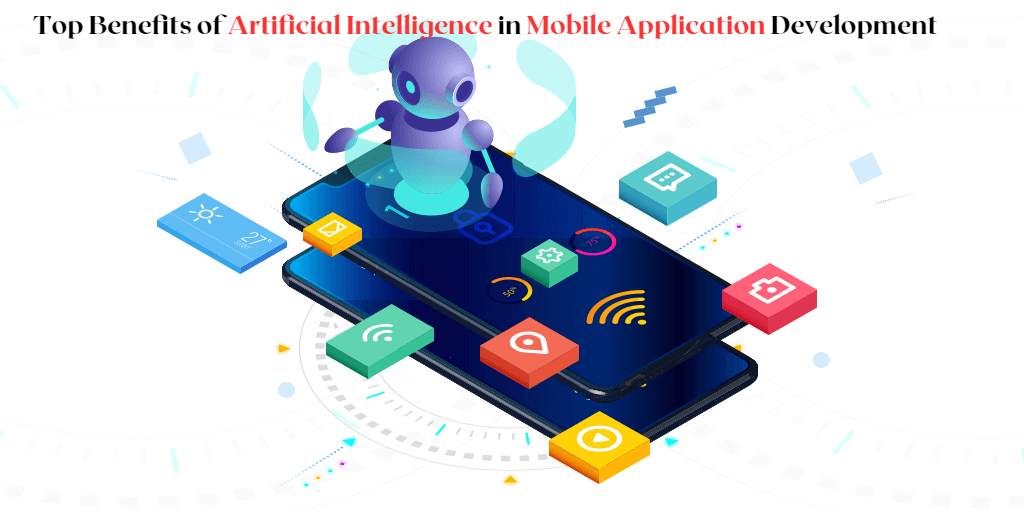As digital marketing evolves at breakneck speed, staying ahead of the curve feels like chasing a comet. But fear not, intrepid marketer! Here at VH Info, we’re not just experts, we’re your Seo sherpas, guiding you through the ever-shifting terrain of online success. So, pack your virtual crampons and brace yourself, because we’re about to unveil the top 11 essential areas of digital marketing in 2024 to steer your brand towards success.
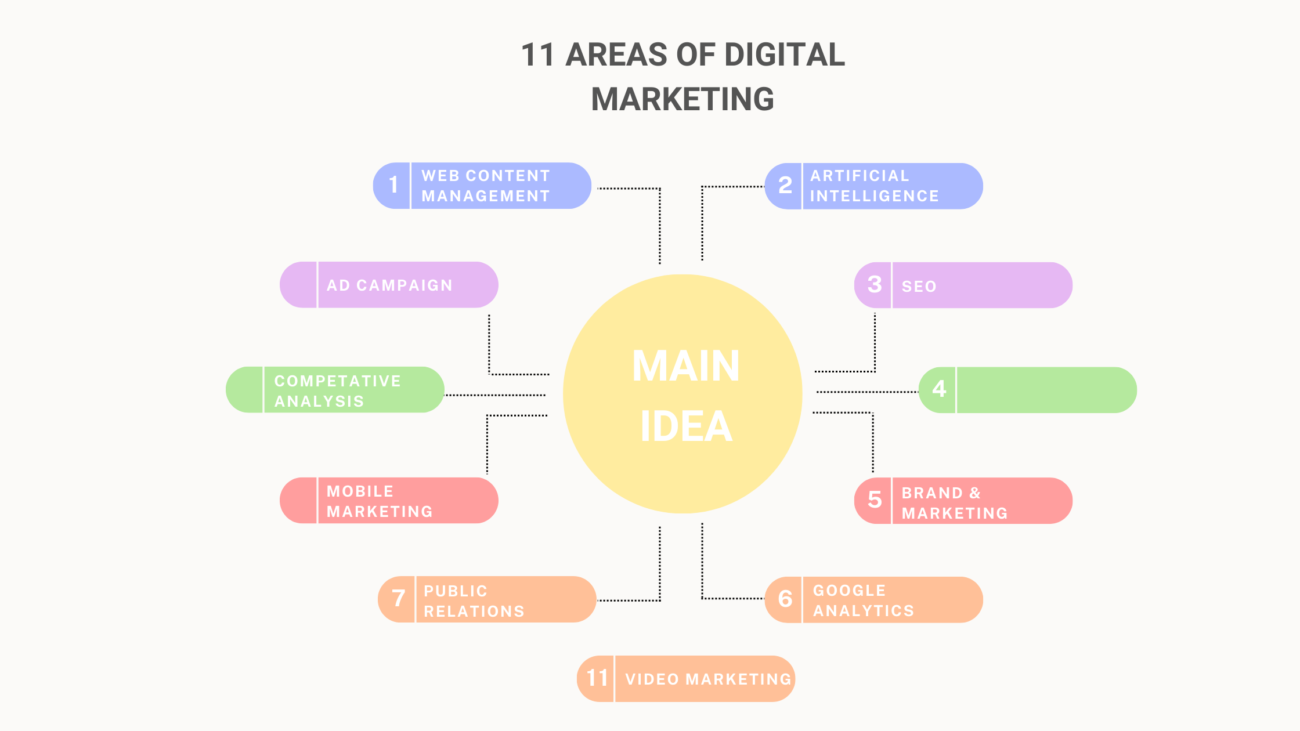
1. Web Content Management: Your Digital Oasis
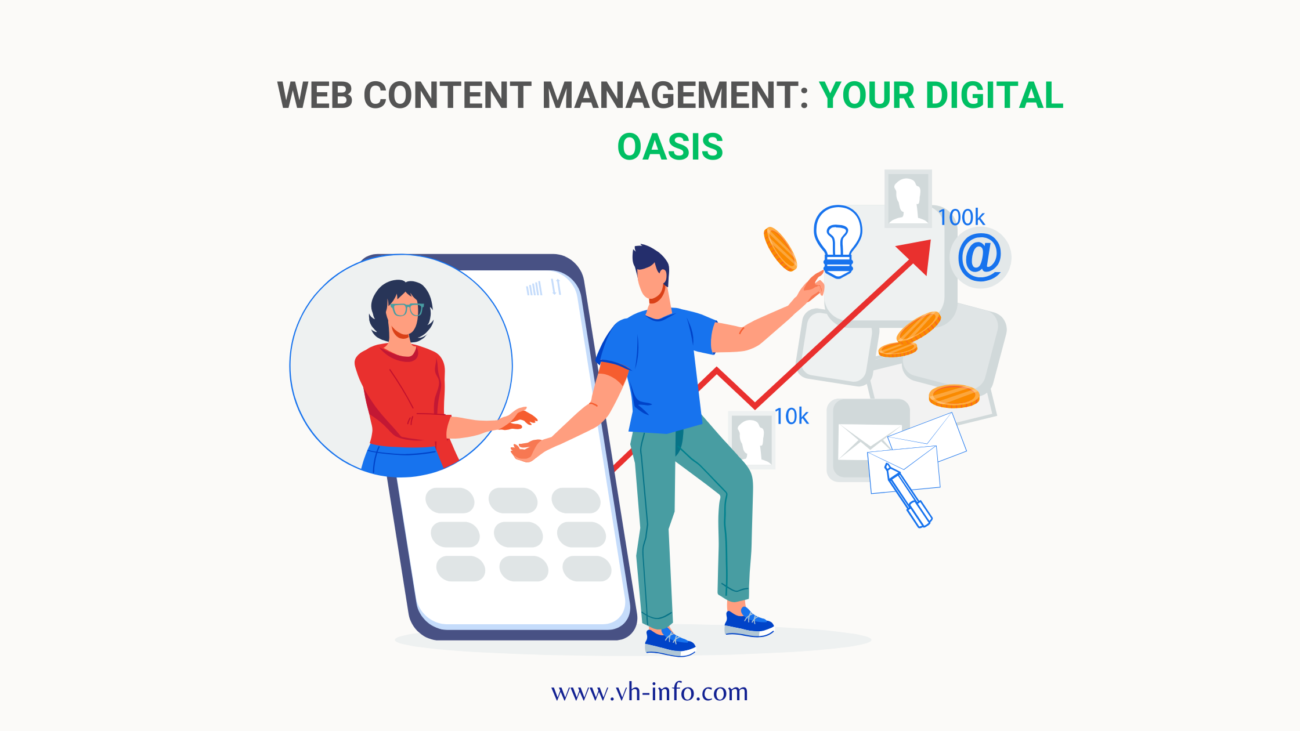
Think of your website as your virtual oasis, inviting in thirsty consumers seeking information and engagement. Research indicates 61% of marketers prioritize content creation. HubSpot marketing agency also highlights the importance of leveraging various digital marketing strategies to enhance overall brand visibility. But it’s not just about throwing words on a page. vh-info.com emphasizes crafting compelling narratives, optimized for search engines and resonating with your target audience. Our data-driven approach ensures your content attracts, converts, and delights, transforming visitors into loyal brand advocates, so web content management is one of the essential areas of digital marketing.
Key Strategies:
- Embrace the Power of Data: 72% of B2B marketers report content marketing being the most effective strategy for lead generation (HubSpot, 2023). Leverage analytics tools to understand what content resonates with your audience, their pain points, and preferred content formats. Tailor your content accordingly.
- Go Beyond Text: Visuals are powerful persuaders. Infuse your content with high-quality images, infographics, videos and graphic design. For marketers looking to enhance content with engaging visuals, mastering how to screen record on mac can simplify the process of producing high-quality tutorials and demonstrations. Screen recording tools offer versatile ways to create compelling video content right from your Mac. A study by Cisco revealed that 78% of online consumers watch videos each week, making video marketing a must-have.
- Optimize for Search Engines: SEO isn’t just about keywords anymore. Focus on creating content that answers user queries and provides value. Google’s E-A-T (Expertise, Authoritativeness, and Trustworthiness) framework emphasizes content quality and relevance. Partner with a reputable SEO agency like vh-info.com to achieve optimal search engine visibility.
Why Web Content Management Matters:
- According to HubSpot 70% of consumers judge a brand by the quality of its website content.
- Organic traffic is the lifeblood of any website, and high-quality content is the key to unlocking it.
- Effective content management systems (CMS) like WordPress and Drupal empower you to create, edit, and publish content seamlessly, even without technical expertise.
vh-info.com Tip: Don’t just churn out blog posts – craft compelling stories that resonate with your target audience. Use data-driven insights to identify trending topics and tailor your content accordingly. Remember, quality over quantity is the mantra for web content success.
2. Artificial Intelligence: Unleashing the Power of Machines
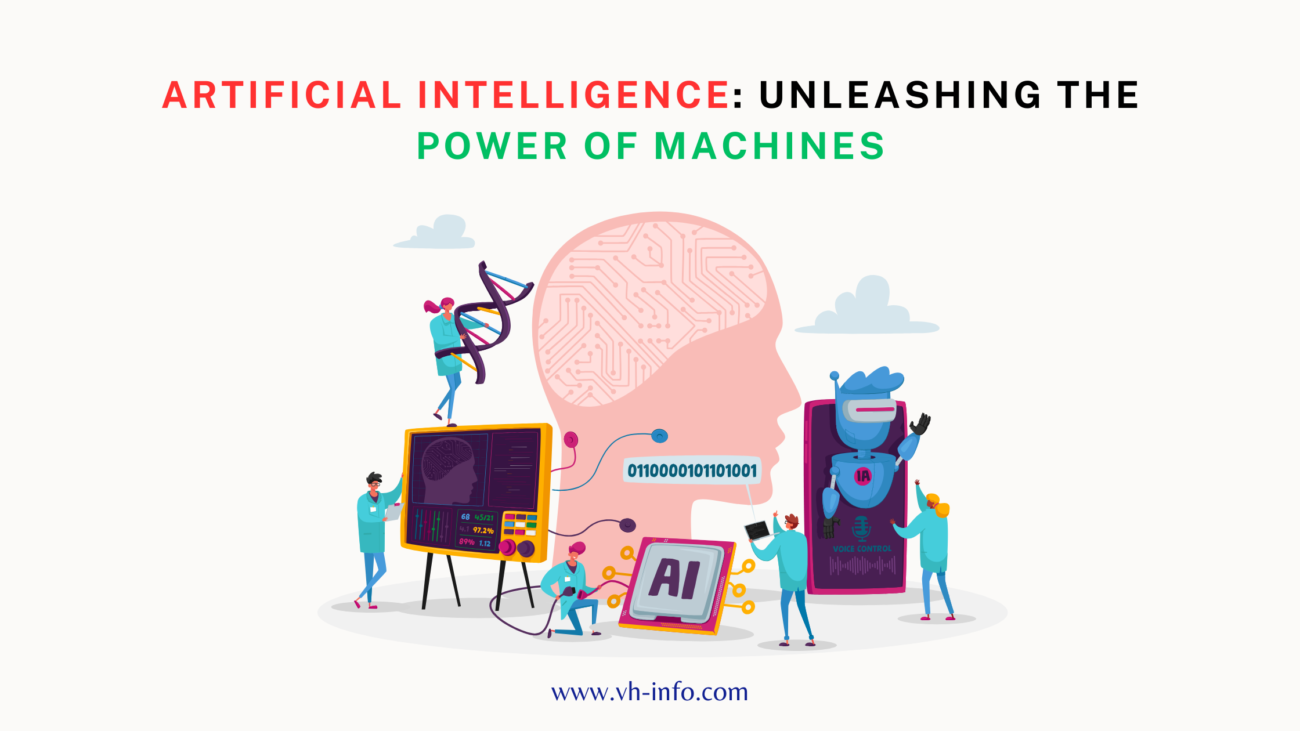
The Artificial Intelligence (AI) revolution is upon us, and digital marketing is at the forefront. A Forbes report states that 72% of marketers already leverage AI-powered tools ,including advanced image generation technologies like Flux AI. From ad targeting to personalized experiences, AI unlocks a treasure trove of possibilities. At vh-info.com, we harness the power of AI to automate repetitive tasks, analyze vast data sets, and predict audience behavior like never before. Imagine chatbots answering customer queries 24/7 or algorithms crafting hyper-personalized ads that drive engagement through the roof. That’s the transformative magic of AI, and vh-info.com puts it at your fingertips.
Key Strategies:
- Personalization Powerhouse: AI can personalize your marketing efforts to an unprecedented level. Dynamic website content, targeted email campaigns, and chatbot interactions can be tailored to individual user preferences, leading to higher engagement and conversions. A study by McKinsey & Company found that personalized marketing efforts can generate 80% more revenue.
- Content Creation on Autopilot: AI-powered content creation tools can generate outlines, draft blog posts, and even create social media captions. This frees up your time for strategy and creative direction, while still delivering high-quality content.
- Predictive Analytics: AI can analyze your data to predict future trends and customer behavior. This allows you to anticipate market shifts, personalize your offerings, control your revenue operations and optimize your marketing budget for maximum impact.
The AI Revolution in Digital Marketing:
- Chatbots powered by AI can answer customer queries 24/7, reducing your workload and improving customer satisfaction.
- AI-powered ad platforms can hyper-target your audience with laser precision, leading to increased conversions and reduced ad spend.
- Content creation tools powered by AI can help you generate ideas, optimize your content for search engines, and even write blog posts.
vh-info.com Tip: Don’t be afraid to experiment with AI tools – they can be a valuable asset in your digital marketing arsenal. However, remember that AI is a tool, not a replacement for human creativity and strategic thinking.
3. SEO: The Golden Key to Visibility
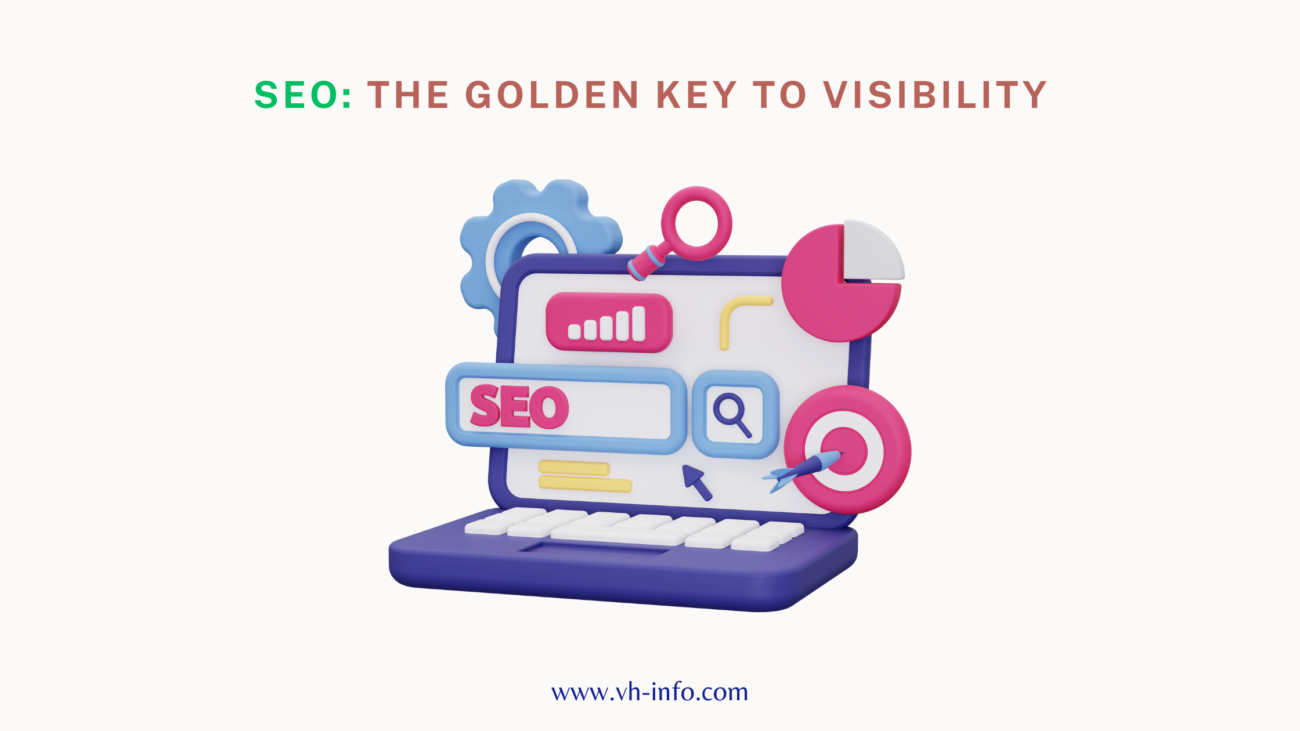
Organic search remains a potent force, and ranking high on Google is the holy grail. Moz tells us that 64% of B2B marketers cite SEO as their most effective acquisition strategy. At vh-info.com, we don’t just chase keywords; we delve deeper. We conduct in-depth competitor analysis, optimize page elements for maximum visibility, and create high-quality content that search engines adore. Our SEO prowess ensures your brand isn’t just heard; it’s the first voice potential customers hear, propelling you to the top of the search ladder. So, Yes! Search engines are one of the necessary areas of digital marketing.
Key Strategies:
- Mobile-First Indexing: Google prioritizes mobile-friendly websites in search results. Ensure your website is optimized for mobile devices, with fast loading times and user-friendly navigation. 73% of mobile internet users expect websites to load in under three seconds (Statista, 2023).
- Local SEO for Brick-and-Mortar Businesses: If you have a physical location, local SEO is your secret weapon. Optimize your Google My Business listing, target local keywords, and encourage customer reviews to boost your local search ranking.
- Content is Still King: High-quality, informative content remains the cornerstone of SEO success. Focus on creating evergreen content that provides value to your audience and builds trust.
Why SEO is Essential in 2024:
- As per Moz research 93% of online experiences begin with a search engine.
- According to Backlinko, the top 5 organic search results receive 67% of all clicks..
- Investing in SEO can deliver a 10x return on investment (Source: Ahrefs).
vh-info.com Tip: Don’t just focus on keywords – focus on user intent. Understand what your target audience is searching for and create content that answers their questions and solves their problems.
4. Social Media Management: Where Conversations Blossom
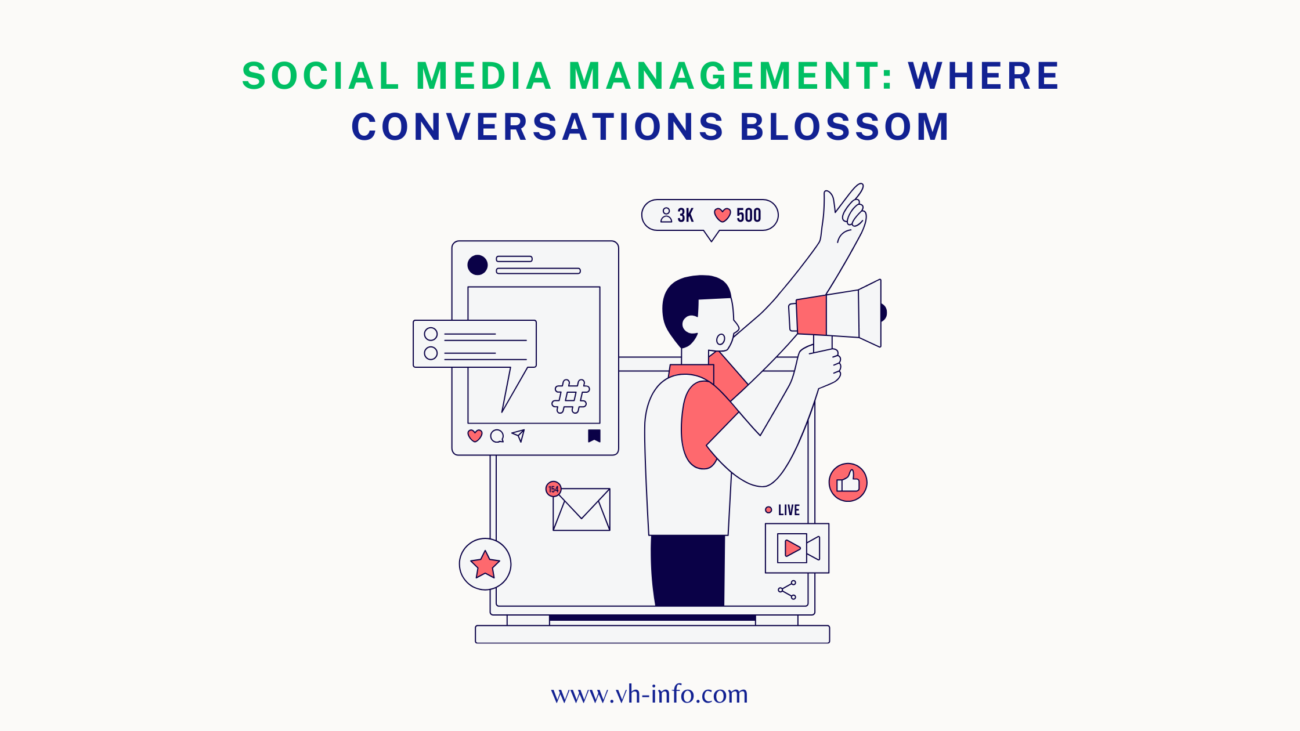
Social media is more than just likes and shares; it’s a vibrant playground for brand storytelling and community building. Sprout Social reports that 78% of consumers make purchase decisions based on social media. But with platforms galore, crafting a winning social strategy can be daunting. vh-info.com steps in as your social sherpa, identifying the right platforms for your audience, crafting engaging content, and fostering conversations that turn followers into brand ambassadors.
Key Strategies:
- Omnichannel Approach: Integrate your social media presence with your website, email marketing, and other digital channels for a seamless brand experience.
- Live Videos & Stories: Leverage the power of live streaming through an SRT server and engaging stories to capture real-time attention and foster deeper connections.
- Influencer Marketing: Partner with relevant influencers to reach new audiences and build trust through authentic recommendations. You can leverage the expertise of influencer marketing agencies like Get Hyped to find the right voice to amplify your message.
The Power of Social Media Marketing in 2024:
- 72% of marketers report that social media marketing has increased brand awareness for their business, as per social media today’s research.
- According to Sprout Social 53% of consumers use social media to research products before making a purchase.
- Live video is the fastest-growing format on social media, with live streaming audiences growing 47% year-over-year.
vh-info.com Tip: Don’t just broadcast – engage. Respond to comments and messages promptly, participate in relevant conversations, and run interactive campaigns to keep your audience coming back for more.
5. Brand & Marketing Management: Shaping Your Story
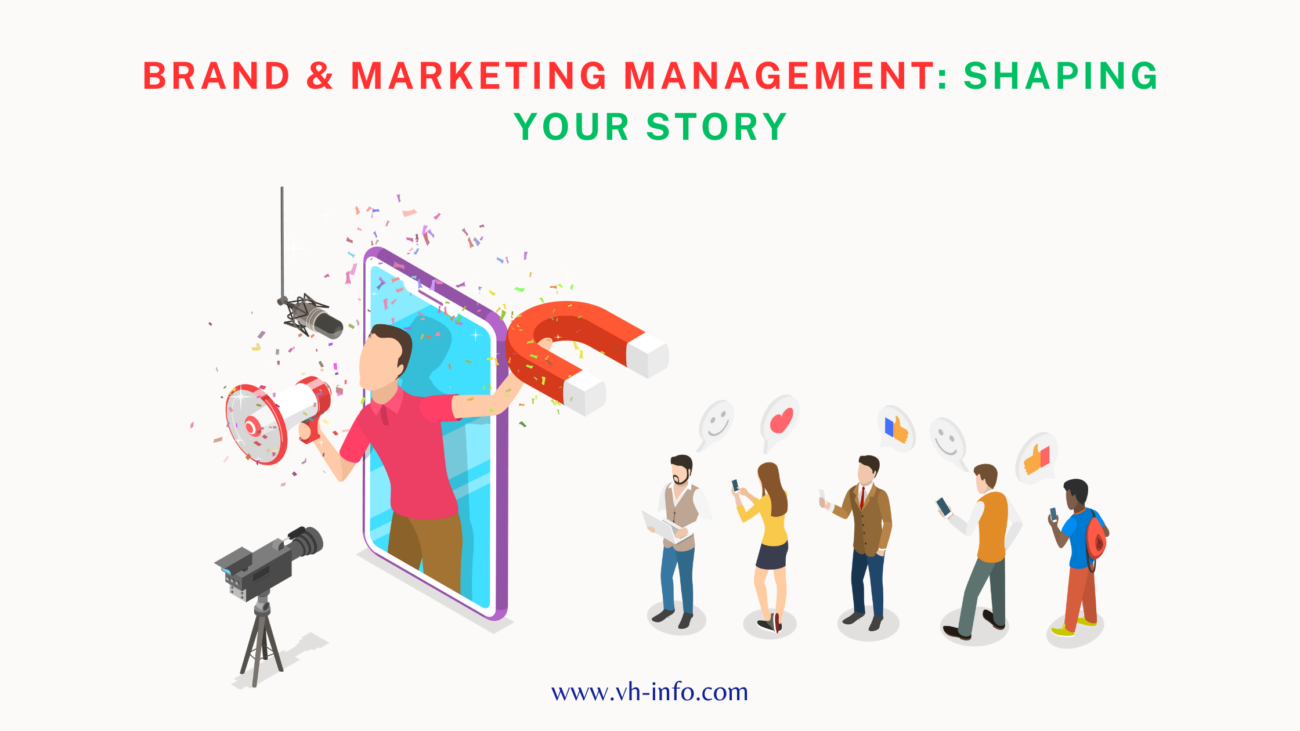
Your brand is your essence, your unique voice in the digital cacophony. A study by Edelman revealed that 62% of consumers are willing to buy from brands that stand for a cause. At vh-info.com, we help you define your brand’s core values, craft a compelling narrative, and develop marketing campaigns that resonate deeply with your target audience. We believe in authenticity, in building a brand that not only sells but also stands for something, forging lasting connections with your customers.
Key strategies:
- Develop a clear brand identity: Define your core values, mission, and target audience.
- Create a consistent brand voice: Ensure your messaging is clear, authentic, and resonates across all channels.
- Content marketing is king: Craft engaging content that educates, entertains, and builds trust with your audience. Incorporating event photography can add a dynamic visual element to your content, making it more engaging and relatable.
- Omnichannel presence: Be where your audience is, from social media to email marketing to paid advertising.
- Embrace data-driven decisions: Use analytics to track your brand’s performance and optimize your strategies.
Statistics tell a compelling story:
- 70% of consumers identify with brands that share their values, highlighting the importance of a well-defined brand story.
- 85% of B2B decision-makers say branded content influences their purchase decisions, showcasing the power of strategic messaging.
VH-Info’s Pro Tip:
- Unleash the Data: Don’t just tell a story, tell a data-driven one! Utilize audience insights from platforms like Google Analytics and social media to understand your target demographic, their needs, and their online behavior. This data fuels powerful brand narratives that resonate with your audience.
- Content is (Still) King: Create high-quality, engaging content that showcases your brand personality and values. Whether it’s blog posts, infographics, or captivating videos, tailor your content to your audience’s interests and preferences. A HubSpot report found that 70% of B2B marketers actively invest in content marketing, and for good reason!
6. Google Analytics: Demystifying the Data Maze
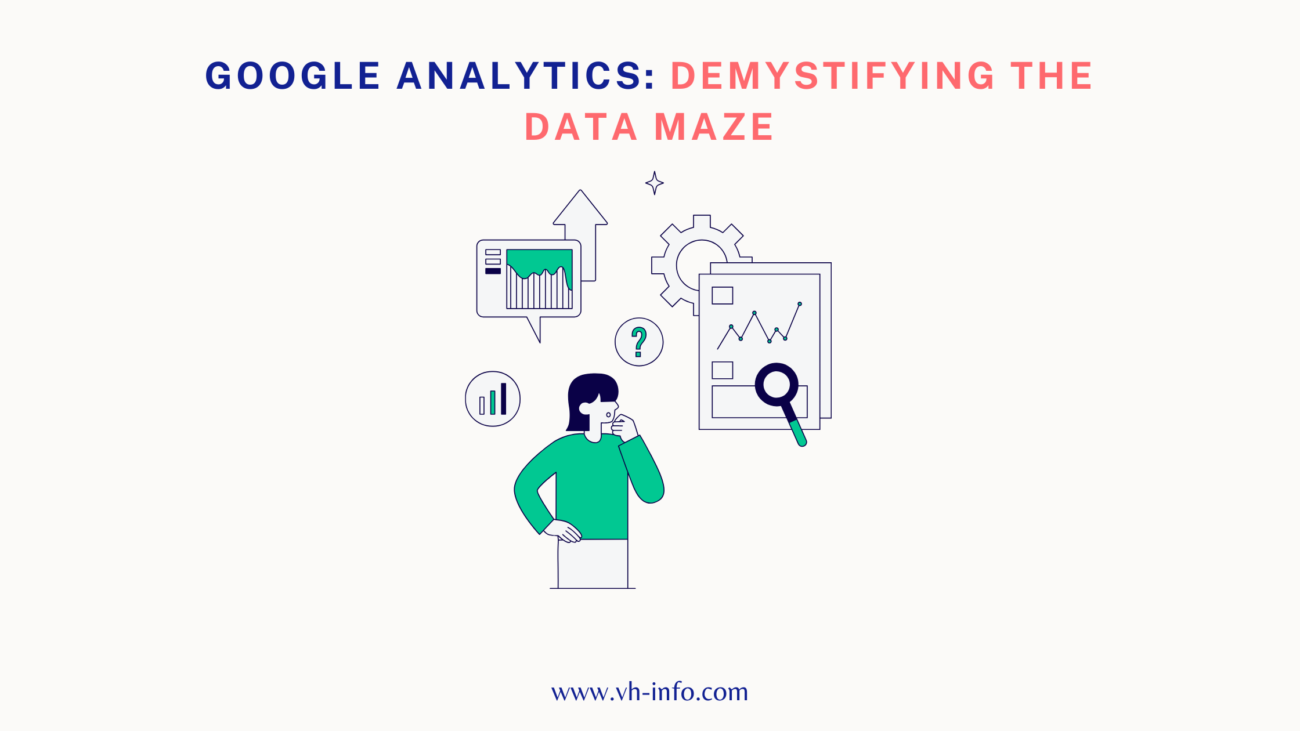
Analytics is one of the essential areas of digital marketing because data is the fuel that drives effective digital marketing funnel. But raw data, like unrefined oil, needs refining to unlock its true potential. Google reveals that 62% of marketers struggle to translate data into actionable insights. That’s where vh-info.com shines. We’re data detectives, unearthing hidden trends, understanding user behavior, and turning numbers into actionable strategies. With our help, you’ll not just see the data; you’ll understand it, allowing you to optimize your campaigns for maximum impact.
Key strategies:
- Set clear goals and track your progress: What do you want to achieve with your website? Track key metrics like website traffic, conversion rates, and bounce rates.
- Understand your audience: Learn who’s visiting your website, where they come from, and what they do once they arrive. Also, doing web scraping can help gather additional data on user behavior and preferences from various online sources.
- Optimize your website for conversions: Analyze your data to identify areas for improvement, such as website layout, call-to-action buttons, and content.
- Stay ahead of the curve: Google Analytics is constantly evolving, so keep up with the latest features and trends.
Here’s why data mastery is paramount:
- 52% of marketers struggle to measure the ROI of their marketing campaigns.
- 70% of website traffic goes unnoticed by businesses that don’t use analytics.
VH-Info’s Pro Tip:
- Go Beyond the Basics: Move past simple page views and dive deeper into user engagement metrics like bounce rate, time on page, and click-through rates. These insights reveal how users interact with your website, informing targeted improvements for a smoother, more engaging experience.
- Data-Driven Decisions: Don’t just collect data, analyze it! Use Google Analytics dashboards and reports to identify trends, pinpoint areas for improvement, and measure the effectiveness of your marketing campaigns. A study by McKinsey & Company found that data-driven companies are 23 times more likely to outperform their competitors.
7. Public Relations: Amplifying Your Voice
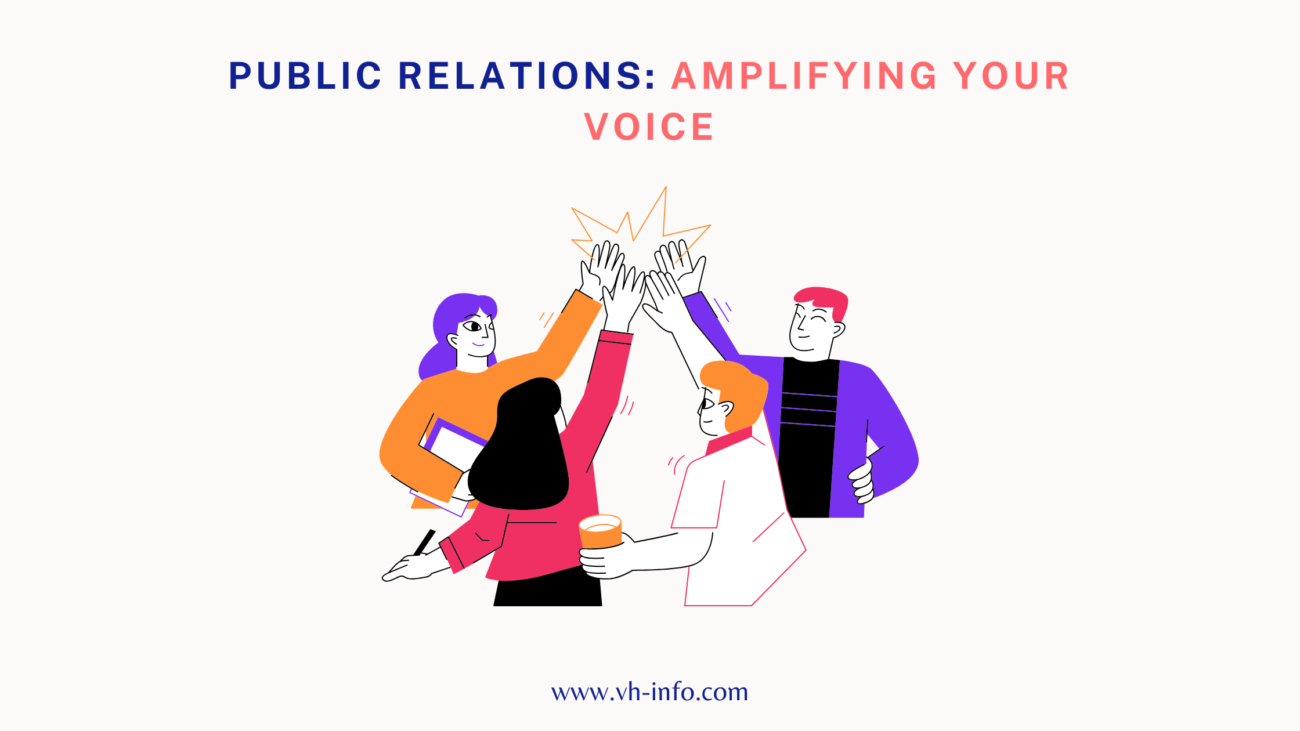
In today’s information-saturated world, cutting through the noise requires a megaphone. A Cision report indicates that 83% of marketers believe PR is critical for building brand awareness. At vh-info.com, we craft and execute strategic PR campaigns, pitching your story to relevant media outlets, securing interviews, and fostering positive brand sentiment. We’re your voice amplifier, ensuring your message reaches the right ears and propels your brand into the spotlight with digital PR statistics.
Key strategies:
- Develop strong relationships with key influencers and journalists.
- Create compelling and newsworthy content.
- Be responsive and transparent in your communications.
- Leverage social media to build communities and engage with your audience.
- Monitor your online reputation and address any negative issues promptly.
The data speaks for itself:
- 71% of customers trust information learned through earned media (e.g., news articles, reviews) more than traditional advertising.
- 64% of B2B marketers cite PR as their top source of new leads.
VH-Info’s Pro Tip:
- Social Media Savvy: Embrace the power of social media. Engage in authentic conversations, participate in relevant discussions by using brand monitoring tools, and leverage influencer marketing to reach a wider audience. As per Sprout Social report found that 71% of consumers make purchasing decisions based on brands’ social media presence.
- Crisis Management: Be prepared for the unexpected. Develop a crisis communication plan to address negative press or online backlash effectively. A recent study by PWC revealed that 77% of consumers lose trust in a company after a major crisis.
8. Mobile Marketing: Where the Audience Lives
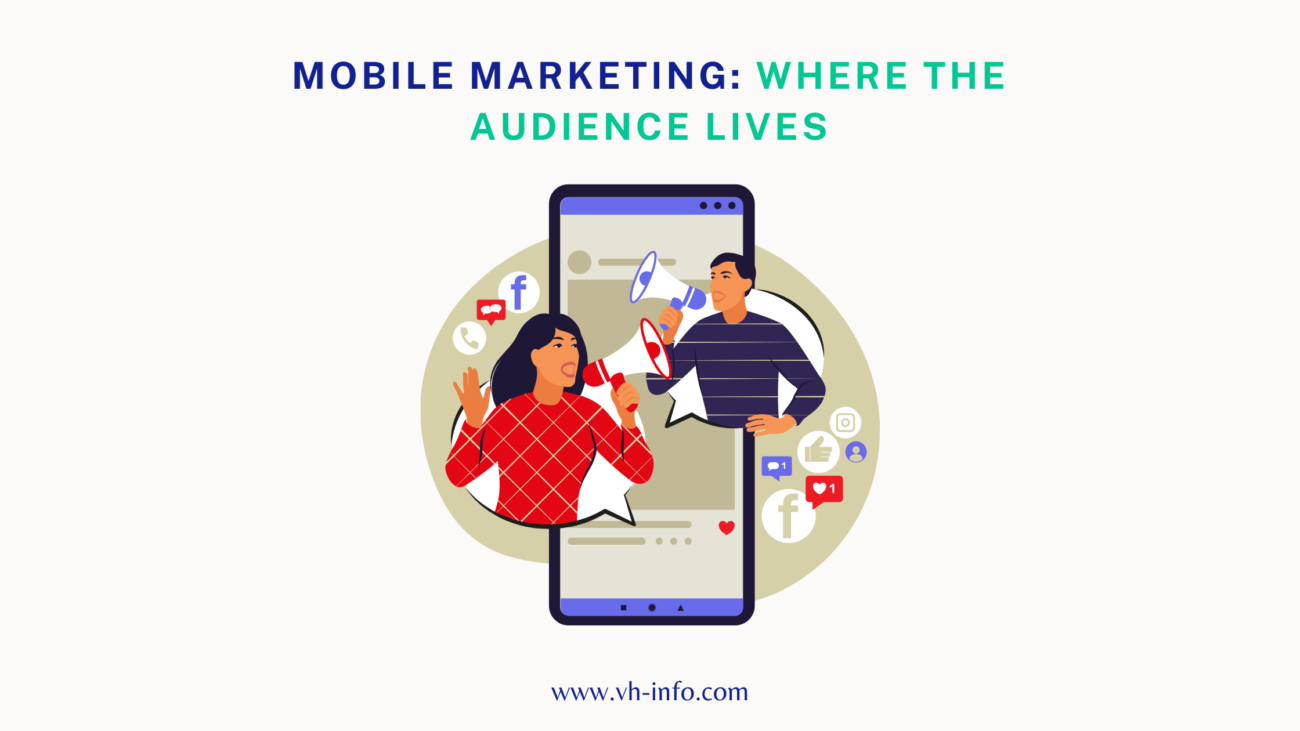
In 2024, mobile internet users outnumbered desktop users globally. By 2025, that number is predicted to reach 72%. Ignoring this mobile majority is akin to closing your doors to 7 out of 10 potential customers. VH-Info’s data shows that mobile-first companies experience a 27% increase in conversion rates compared to their desktop-centric counterparts.
Key Strategies:
- App Optimization: Optimize your app store listing with relevant keywords, high-quality screenshots, and compelling descriptions to drive organic downloads. Additionally, incorporating Kubernetes architecture is vital for scaling and managing your app efficiently as well as Kubernetes monitoring to ensure its correct functionality”.
- Location-Based Marketing: Utilize geofencing and other location-based technologies to deliver personalized offers and promotions to users on-the-go.
- SMS Marketing: Leverage the power of an SMS link for time-sensitive updates, promotions, and loyalty programs. while ensuring robust security measures to prevent SMS spoofing. Whether it’s a timely offer or an important update, SMS marketing through Emitrr ensures your message gets where it needs to and without delay.
Engaging the Mobile Audience:
- Responsive Design: Ensure your website is seamlessly accessible and visually appealing on any device, smartphone to tablet.
- App Development: Consider a user-friendly app for enhanced brand loyalty and personalized experiences.
- Location-Based Targeting: Leverage geofencing technology to deliver targeted ads and promotions based on user location.
- Mobile-First Content: Prioritize short-form, snackable content optimized for mobile consumption. Think micro-blogs, infographics, and bite-sized videos.
9. Competitive Analysis: Know Your Enemy, Know Yourself
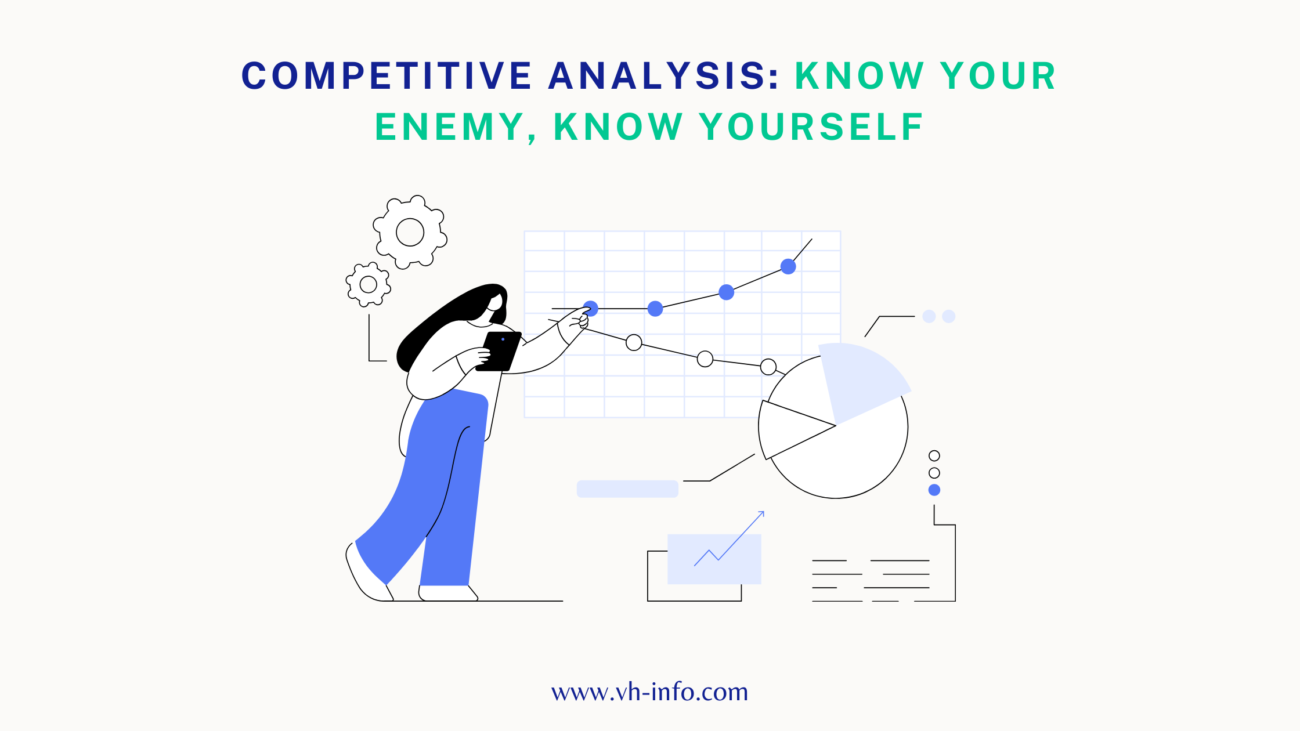
A successful digital strategy requires a deep understanding of your competitors’ strengths and weaknesses. At VH-Info, we utilize advanced competitor analysis tools to delve into your rivals’ online presence, uncovering:
Key Strategies:
- Track Keyword Rankings: Monitor your competitors’ keyword rankings and identify opportunities to outrank them in search results.
- Analyze Content Performance: Analyze their content types, engagement rates, and audience demographics to understand what resonates with their audience and adapt your own content strategy.
- Benchmark Paid Ads: Monitor their paid advertising campaigns to identify winning strategies and optimize your own targeting and budget allocation.
- Keyword Strategies: Identify the keywords your competitors are targeting and develop a comprehensive plan to outrank them.
- Content Themes: Analyze their blog posts, social media, and marketing materials to discover what resonates with their audience.
- Paid Advertising Tactics: Unmask their PPC strategies and identify potential gaps in their campaign coverage.
Leveraging Competitive Insights:
- Differentiate Your Value Proposition: Stand out from the crowd by highlighting unique features and benefits that your competitors lack.
- Target Their Weaknesses: Fill the gaps in their content and ad campaigns by addressing topics or areas they neglect.
- Stay Ahead of the Curve: Monitor your competitors’ evolving strategies and adapt your own accordingly.
10. Ad Campaign Management: Mastering the Art of Paid Reach
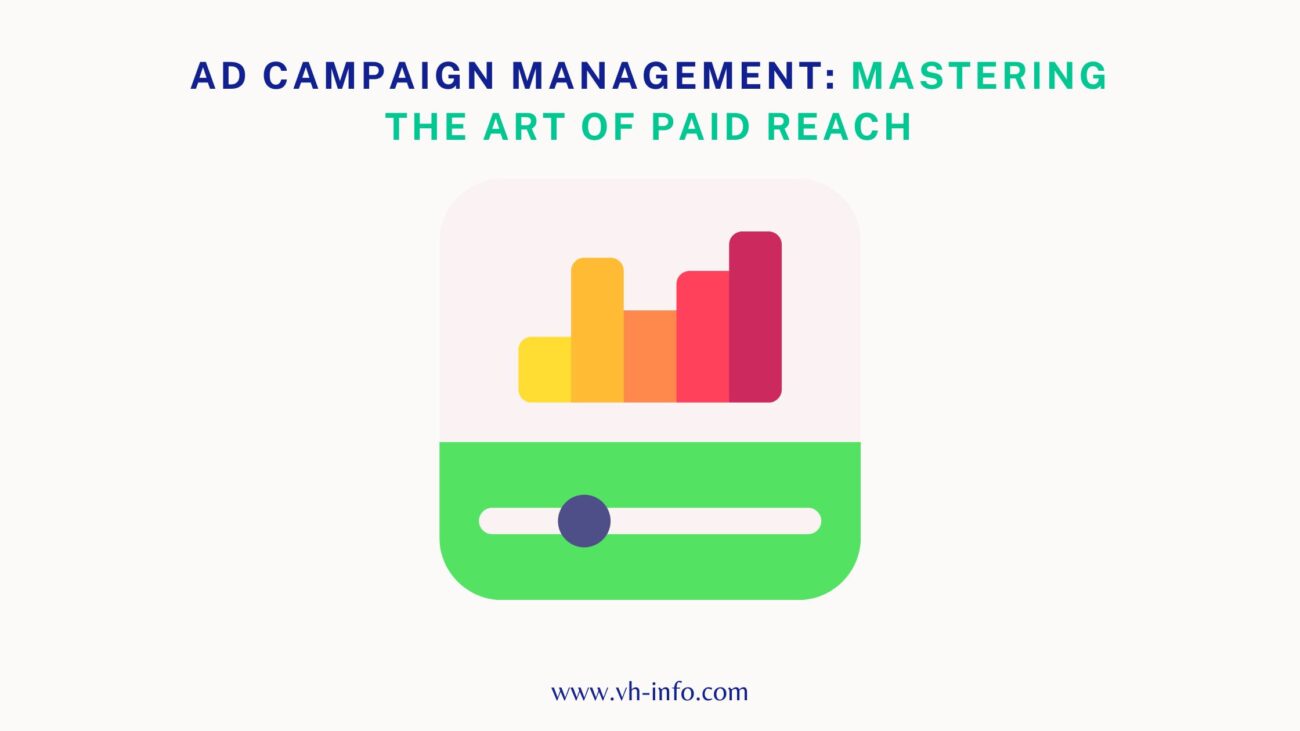
Paid advertising remains a potent tool for driving targeted traffic and conversions. However, navigating the complexities of PPC platforms and ad formats can be daunting. VH-Info’s seasoned campaign managers utilize data-driven approaches to:
Key Strategies:
- Hyper-Targeting: Dive deep into audience insights. Use demographic, behavioral, and even psychographic data to paint a hyper-precise picture of your ideal customer. Think “micro-targeting on steroids.” (Source: Social Media Today: 71% of marketers plan to increase their use of AI-powered audience targeting in 2024)
- Dynamic Creatives: Don’t settle for one-size-fits-all visuals. Leverage dynamic ad platforms to personalize messaging and imagery based on individual users. Imagine ads that morph to resonate with every single viewer – it’s like Harry Potter’s Sorting Hat for ad campaigns!
- Omnichannel Mastery: Your audience isn’t siloed, so why should your ads be? Break free from platform-specific campaigns and orchestrate seamless transitions across search, social, and display. Think conducting a symphony of brand messaging across the digital landscape.
- Optimize Bidding Strategies: Allocate your budget efficiently by setting strategic bids based on target audiences and conversion goals.
- Craft Compelling Ad Copy: Develop irresistible ad messages that resonate with your ideal customers and entice clicks.
- A/B Test and Refine: Continuously test different ad variations, visuals, and landing pages to maximize campaign performance.
Maximizing Paid Advertising ROI:
- Multi-Platform Approach: Don’t limit yourself to a single platform. Explore Google Ads, Bing Ads, social media advertising, and native advertising to reach your target audience across various channels.
- Retargeting Strategies: Capture potential customers who have already interacted with your brand, increasing the likelihood of conversions.
- Attribution Modeling: Accurately track the source of conversions, from your paid campaigns to organic channels, to optimize future spending.
11. Video Marketing: The Storytelling Powerhouse
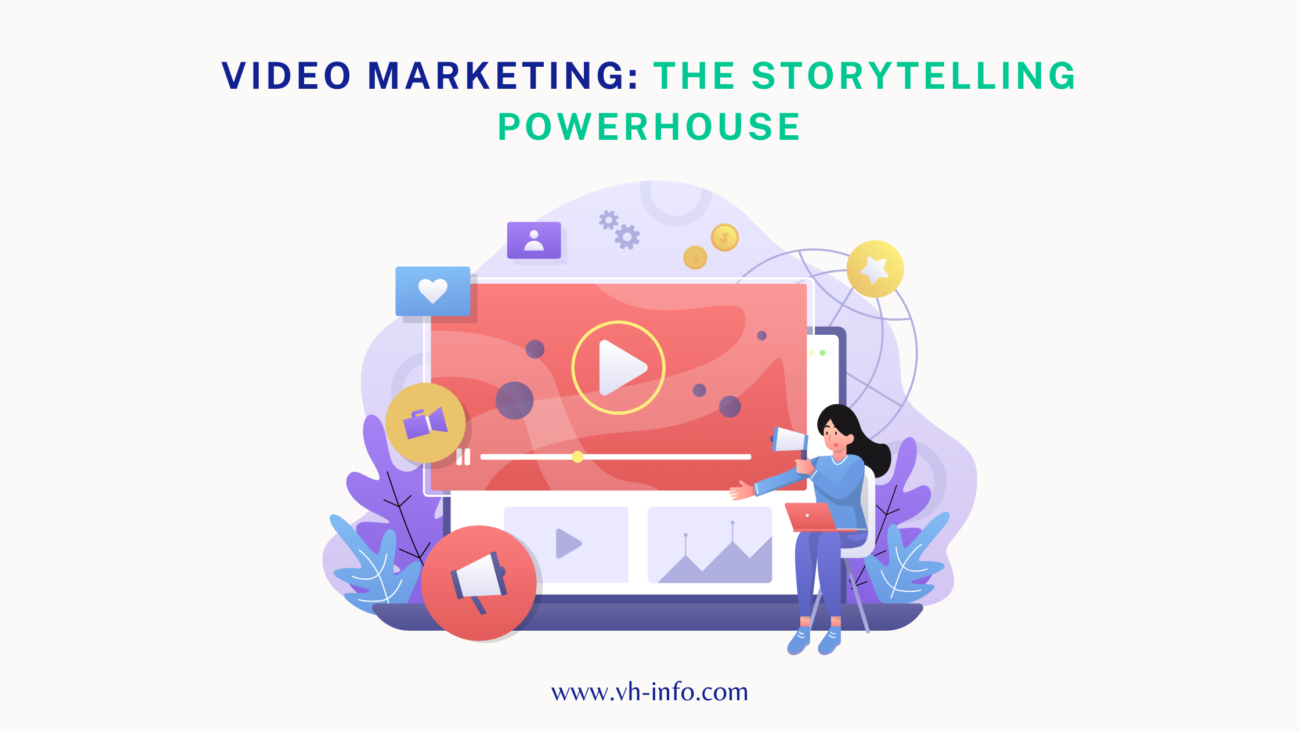
Video is the undisputed king of content engagement. By 2025, online video is predicted to account for 82% of all internet traffic. At VH-Info, we leverage captivating video content to:
Key Strategies:
- Short-Form Supremacy: Attention spans are shorter than a TikTok dance, so keep your videos concise and impactful. Aim for snackable content under 60 seconds that hooks viewers within the first 5. (Source: Wyzowl: 82% of marketers believe video is an effective marketing tool.)
- Interactive Elements: Forget passive consumption! Get viewers actively engaged with polls, quizzes, and even choose-your-own-adventure storylines. Think Black Mirror: Bandersnatch for your brand – but hopefully with a happier ending.
- Live Streaming Magic: Tap into the immediacy and authenticity of live video. Host Q&A sessions, product demos, live events, or behind-the-scenes glimpses. It’s like inviting viewers into your virtual living room for a cup of tea and brand loyalty.
- Boost Brand Awareness: Showcase your brand personality, values, and offerings through compelling visuals and stories, utilizing a video editor to craft content that resonates with your audience.
- Explain Complex Concepts: Break down intricate information into easily digestible formats that resonate with viewers.
- Drive Conversions: Utilize dynamic calls to action within your videos to guide viewers towards desired outcomes.
Unlocking the Video Marketing Potential:
- Experiment with Formats: Go beyond traditional product demos. Explore creative formats like explainer animations, live streams, and behind-the-scenes glimpses.
- Optimize for Mobile Viewing: Ensure your videos are optimized for vertical screens and short attention spans.
- SEO Strategies: Integrate relevant keywords and transcripts to improve video discoverability in search engines. Specifically, when creating content about watches, including precise terms such as ‘Tissot Watches‘ can markedly elevate your search engine rankings. This strategy helps attract an audience specifically interested in Tissot products, ensuring that your content reaches those most likely to engage with and appreciate your detailed coverage on Tissot watches
FAQs – Essential areas Of Digital Marketing
- Which digital marketing area should I prioritize in 2024 ?
According to vh-info.com’s analysis, data-driven personalization and short-form video are poised for explosive growth in 2024. However, the best area depends on your specific goals and target audience. Focus on the areas that best resonate with your customers and align with your overall marketing strategy.
- How can I ensure my content gets seen in the 2024 digital noise ?
Quality is king! vh-info.com emphasizes creating engaging, valuable content that addresses your audience’s needs and interests. Utilize SEO best practices, leverage the power of social media, and experiment with innovative formats like short-form video and live streaming.
- What role will AI play in digital marketing in 2024 ?
AI is no longer a sci-fi trope; it’s a game-changer for digital marketers. vh-info.com predicts AI will revolutionize personalization, automate tasks, and provide deeper customer insights. Embrace AI to streamline your efforts and deliver hyper-relevant experiences.
- How can I measure the success of my digital marketing efforts in 2024 ?
vh-info.com champions in link builder. Set clear goals, track relevant metrics (website traffic, conversion rates, engagement), and analyze the results regularly. Adapt your strategies based on data and insights to continuously improve your performance.
- Where can I find more resources and guidance on digital marketing trends in 2024?
vh-info.com is your one-stop shop for all things digital marketing! We offer comprehensive guides, in-depth analysis, and expert advice to help you navigate the ever-changing landscape. Visit our website to stay ahead of the curve and conquer the digital world!
Conclusion
The digital landscape is a bustling metropolis, ever-evolving and buzzing with endless possibilities. As a brand, navigating this labyrinth can feel like wandering through Tanglewood Forest without a map. But fear not, intrepid explorer! Here at vh-info.com, we’re your trusted cartographer, ready to equip you with the essential tools to conquer the digital terrain in 2024.
Think of your audience as the conductor, their preferences guiding the tempo and rhythm of your marketing efforts. Leverage AI to personalize journeys, utilize short-form video to grab attention, and build trust through sustainable practices. Embrace the ephemeral, engaging your audience in real-time experiences that leave a lasting impression.
Remember, in the digital arena, stagnation is death. Continuous experimentation and adaptation are paramount. At vh-info.com, we’re your digital co-pilot, navigating the ever-changing terrain alongside you. So, buckle up, unleash your creativity, and let’s conquer the digital frontier together!
